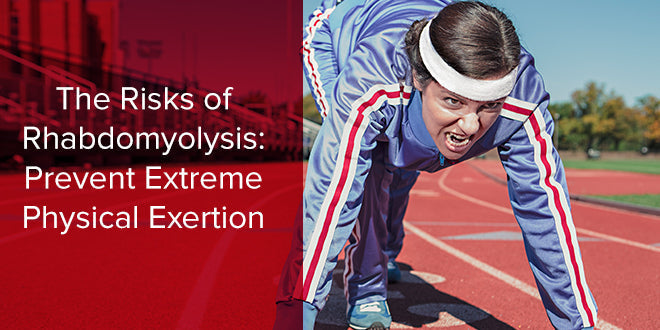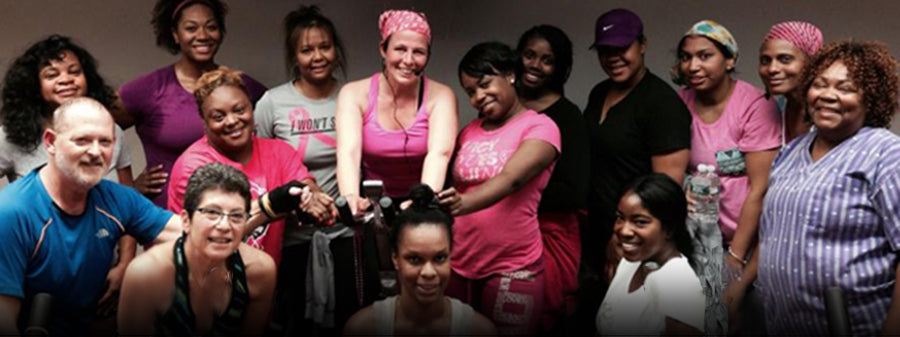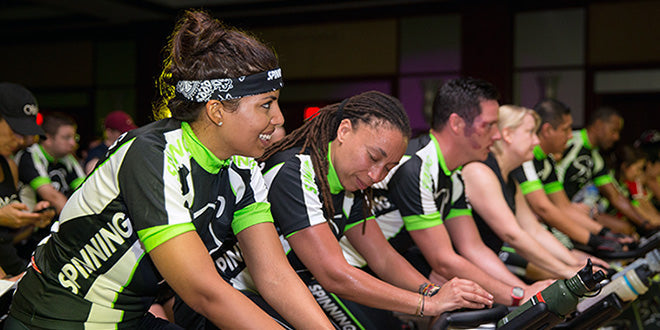A cavalier attitude toward indoor cycling (or any exercise for that manner) can have serious consequences for new riders. No, they’re not going to get struck by a car or fly head over handlebars; however, when intensities are too high, conditions such as rhabdomyolysis can occur in individuals new to exercise. Often referred to as “rhabdo,” the disease has an acute onset and involves a breakdown of muscle fibers into the bloodstream, potentially causing kidney damage and in severe cases, kidney failure or even death.
Causes
Numerous factors contribute to rhabdo, including trauma or crush injuries, certain prescription and illicit drugs, severe dehydration, former incidence of rhabdo, and extreme physical exertion. This last cause is key to understand, as many people will specifically associate indoor cycling with the condition. Rhabdomyolysis can result from ANY form of physical activity in individuals not accustomed to the activity (ex. those new to exercise) when that activity is taken to exhaustive levels. So although there have been reports of individuals developing the condition when engaging in indoor cycling (1,2), it was the intensity of the exercise and the individual’s physical condition that lead to the development of rhabdo, not necessarily the specific exercise itself. If exercise intensities were adjusted to match the physical capabilities of the rider, the condition would have been a non-issue. This emphasizes the point that instructors must know who they are dealing with in their classes and to coach new participants to exercise at their own pace to keep them from pushing themselves to the point of exhaustion.
Symptoms
Symptoms of rhabdomyolysis include darkened tea-colored urine, general weakness, muscle stiffness and tenderness, loss of strength, joint pain, swelling and muscle weakness. Symptoms may begin immediately following the workout and fail to improve or worsen in the days following the event. In the Medicina study, doctors observed the following presenting symptoms:
- Myalgia—severe muscle pain
- Asthenia—loss of muscle strength
- Myoglobinuria—myoglobin (a product of muscle breakdown) in the urine
- Functional impotence of the lower limbs
- Diagnosis and Treatment
Rhabdo has a rapid onset and should be treated immediately. Diagnosis can be made with a blood test for creatine kinase and urine tests for myoglobin, along with further testing that can indicate complications. Treatment involves inpatient hospital care where patients will receive intravenous fluids to help the kidneys process waste products. It may also involve diuretics and bicarbonate or in extreme cases kidney dialysis. In most cases, with prompt attention, sufferers can make a complete recovery.
Tips for Preventing Rhabdomyolysis:
- Have participants gradually introduce themselves to Spinning®.
- Encourage students to drink plenty of fluids during and after Spinning workouts. According to the Spinning 8-Week Performance Program, unlike outdoor cycling where a breeze can cool your body, indoor exercise causes more perspiration and an increased need for fluid intake. We recommend 40 ounces of water for a 40-minute ride.
- Keep the temperature of the facility comfortably cool to prevent extreme fluctuations in riders’ body temperature.
- Observe the Spinning Energy Zones™ which recommend endurance training comprises the largest percentage of your total training time. The Endurance Energy Zone involves working at 65 to 75 percent of Maximum Heart Rate at a light to moderate resistance.
- Progress riders gradually. Building an aerobic base is essential before participating in a Strength Energy Zone class and doing so too early can lead to injury.
- Encourage riders to listen to their body, ride at their own pace and set their bike’s resistance at the level that feels right for them.
Follow the Spinning Program guidelines – not all indoor cycling programs are created equal.
References:
- Hernandez-Contreras, M.E., Torres-Roca, M., Hernandez-Contreras, V., et al. (2014). Rhabdomyolysis after initial session of indoor cycling: analysis of 11 patients. Journal of Sports Medicine and Physical Fitness, [Epub ahead of print].
- Montero, J., Lovesio, C., Godoy, M.V., & Ruiz, G. (2009). Rhabdomyolisis caused by spinning in nine patients. Medicina (B Aires), 69(1 Pt 2), 153-156.






Leave a comment
This site is protected by hCaptcha and the hCaptcha Privacy Policy and Terms of Service apply.